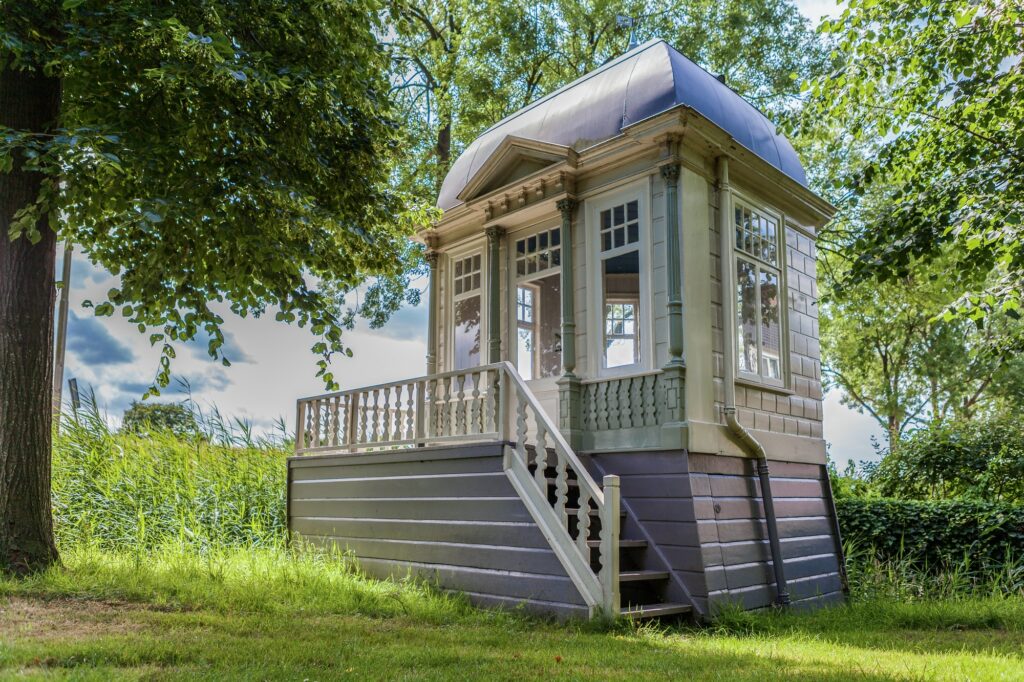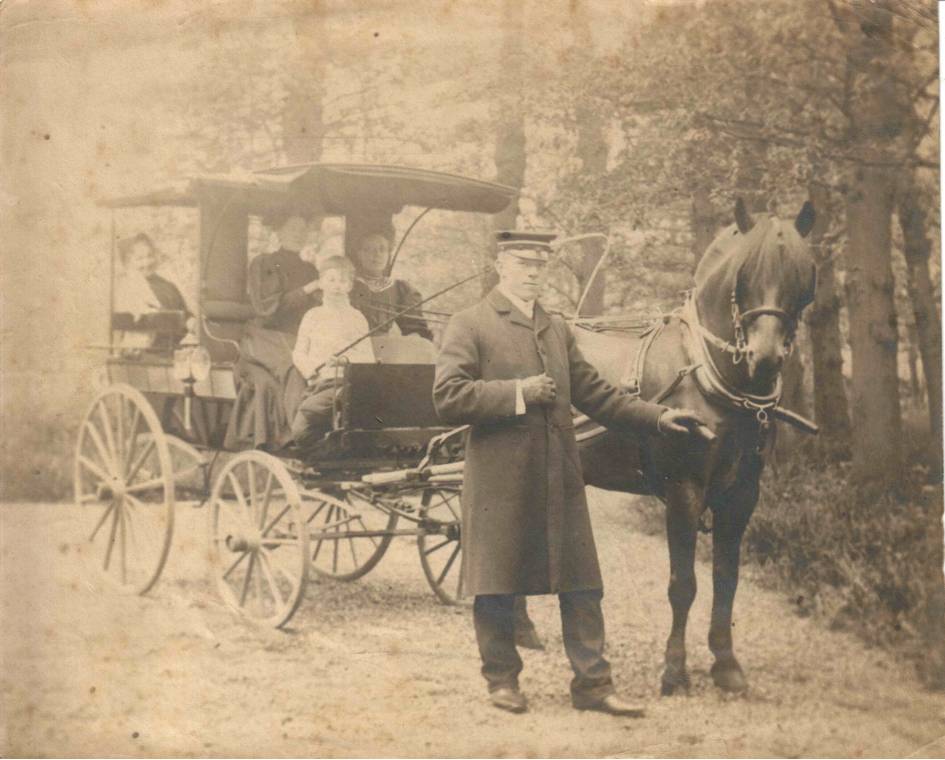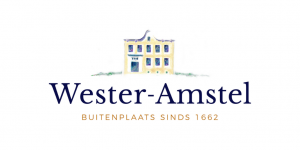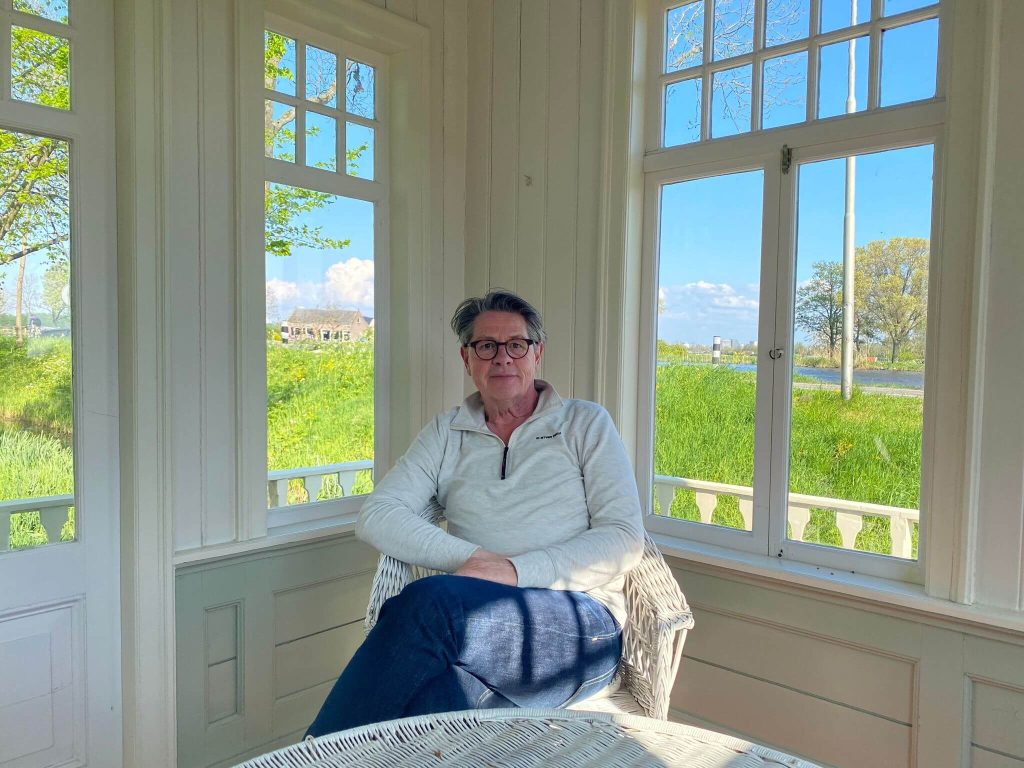If you have ever had the pleasure of visiting Wester-Amstel on Amstelland Day or Open Monuments Day, then it’s likely you have either seen or been a part of one of our tours. Led by our wonderful volunteers, these tours are filled with stories of Wester-Amstel’s park, gardens, house, and history.
Knowing that the tours are a great way for visitors to get to know Wester-Amstel, we recently enlisted the help of a brand new volunteer - Harold Elmer Janssen. With his background as an artist and experience in developing tours and workshops for museums in Amsterdam, we knew we wanted his help to elevate our tours and your experience during them. And with Amstellanddag quickly approaching (12 June 2022), we thought it was the perfect time to introduce him to you.
Our interview took place in Wester-Amstel’s tea pavilion on a sunny Sunday afternoon. While we sat there chatting, we were able to enjoy views of the Amstel River and the activity on and around it. Keep reading to learn more about Harold, how he came to be a volunteer and friend of Wester-Amstel, how he plans to redesign our tour, and much more!

Taylor Blades: Thank you for meeting with me today.
Harold Elmer Janssen: My pleasure.
Taylor: We publish a digital newsletter, De Buitenplaats, twice a year. And within it is the Friends of Wester-Amstel series. It introduces the readers to our volunteers and friends, highlighting the community we have here. And you, of course, are a part of this community! So, can you please introduce yourself to our readers.
Harold: Yes well, I'm Harold and I was first introduced to Wester-Amstel around 25 years ago! My husband met Wester-Amstel's steward through work and, long story short, we became close friends. I can remember lovely evenings spent in a pavilion at the back of the park, just the four of us – myself, my partner, Wester-Amstel's steward, and his partner. Those evenings are some of my first memories of this place.
Taylor: Are there any specific details from those evenings and conversations that made you want to learn more and become more involved with Wester-Amstel?
Harold: During those moments, we learned so much about Wester-Amstel. We listened to the stories about Wester-Amstel's history, the steward's family, the beautiful trees and plants there, amongst other things. I have always been very charmed by this place.
Taylor: Have many things changed since you first started visiting Wester-Amstel?
Harold: Well, there is a new company renting out the main house, which is good because they've done a great job at restoring parts of the building. And to my delight, Wester-Amstel’s volunteers are spending more and more time on bringing the park back to the way it was. They are putting a lot of effort into the biodiversity of Wester-Amstel.
Taylor: You mentioned that you were living abroad and therefore weren't able to visit Wester-Amstel as often. But now that you are back, I've been told, you'll be helping out in a very exciting way! Can you tell me a bit about what it is you'll be doing?
Harold: Having been trained as an artist and having experience creating tours and workshops for a few museums in Amsterdam, I was asked if I would be interested in looking at what Wester-Amstel is currently doing in these areas and how we can develop it further. So, I'm looking into all of that right now.
Taylor: It will be quite the task, redesigning our tours, but we're looking forward to seeing what you create.
Harold: The bar is high, which is a good thing, but it makes me a bit nervous. On the 12th of June, for example, it is Amstellanddag and I’ll be giving two brand new tours. But it will be okay because I love to read about the history of the park! I have a garden and I love to garden, but I don't know too much about it. I learn from trial and error.
Taylor: Well, this is a good place for you to gain your knowledge about plants and gardening! There are so many experts here and people who have been doing this for ages. Can you tell me a bit more about what the tours will be like? Will you give tours of the park, gardens, and house?
Harold: I think a good tour lasts 45 minutes, an hour at the most, with a small group. Ten to 15 people, so that you can keep them together and engaged. My idea, at the moment, is to gather everyone together at the gate. I will tell them about the history of the gate and about the Amstel River, because that is how people used to arrive back in those days. I will tell them that it took people more than an hour by carriage to get from Amsterdam's city center to Wester-Amstel. With information like this, you can create an atmosphere and paint a picture for visitors.


After the gate, we will walk over and see the house. There's so much to tell about the house, the family, and the history. I like when a group participates, so I will ask them questions about experiences from their own life. Not exam questions though! Nothing like, "So, tell me something about this tree or plant." Just questions that encourage them to become a part of the tour. That's my way of doing it.
I always try to find a way to bridge the history to the present day, make connections, because we always look at the past and think, "Oh, it was done this way back in those days." But quite often, we still do it that way, even if it is slightly different. This makes it more interesting and ensures people are participating in the tour and not simply listening to a very boring, monotone story. And on days like Amstellanddag, there will be other volunteers there to answer specific questions about the park and gardens and tell visitors other stories about Wester-Amstel.
Taylor: Can you tell me a bit more about your process for gathering all the information needed to create the tour? It must be quite the undertaking.
Harold: What I do is I read a lot about the history. In the coming weeks, I will ask the other volunteers to feed me with their knowledge of Wester-Amstel. And then I will put everything together. The biggest problem for me is always to keep it within the time limit.
Taylor: I think that is a problem that every person who gives a tour faces when it comes to Wester-Amstel. You could go on for hours and hours, because there are so many stories to share!
Harold: One thing you have to consider before each tour is: who is my audience? And each time, it's a little different. You must get to know your audience and then decide which way to go.
Taylor: What do you enjoy the most about Wester-Amstel?
Harold: [Without skipping a beat, Harold has an answer] The peace and quiet. There's a bench at the end of the park where I like to sit. I am particularly fond of this spot and I could sit there all day.
Taylor: And for someone who is visiting Wester-Amstel for the first time, what areas do you recommend?
Harold: I love the orchard with all its trees and the shade. What is really nice about Wester-Amstel is the enormous diversity of nature and nice places to visit throughout the year. Around every corner is a different place to explore. I think for everyone there is a corner or a little place where they can be very, very happy and can leave the city behind.
Taylor: Do you think that having a place like Wester-Amstel is important? Do you think it adds value to the community?
Harold: It's very important. I think that, first of all, it's very important that there is still a line to the past that teaches us how it used to be, but also how it still could be. It's also sets an example to others as to how you can share, create, and be a part of a community.
Taylor: And finally, what do you hope the future holds for Wester-Amstel? In five years time, in ten years time.
Harold: I hope it is still peaceful and quiet, not very commercialised. Keep it as it is, because it is lovely.
By: Taylor Blades

